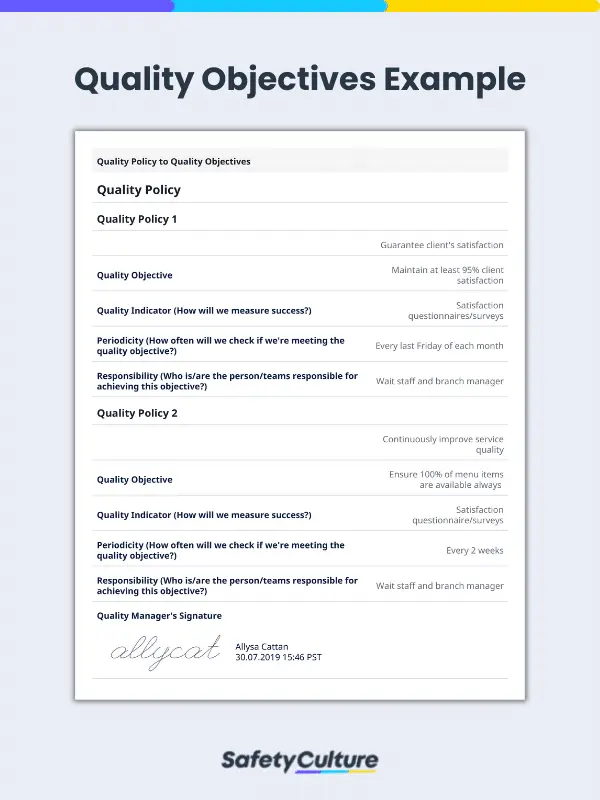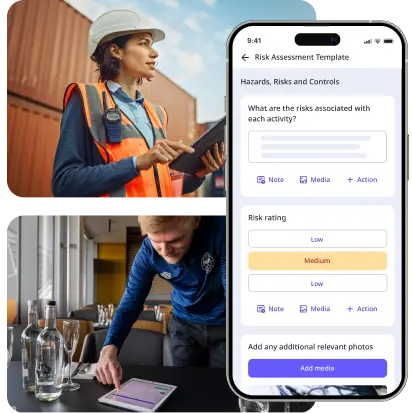What are Quality Objectives?
Quality Objectives are specific business goals for the value and performance of products or services. Each quality objective aims to ensure alignment with the company’s Quality Policy, the statement of their strategic direction. Both quality objectives and quality policies are standard requirements of ISO 9001:2015. Generally, quality objectives are set by managers, supervisors, or a person-in-charge. Failure to follow set quality objectives can lead to substandard products and services, inefficient processes, and communication breakdown among teams.
Quality Goals and Objectives Examples
Quality goals and objectives vary greatly depending on the industry, company, product, or service. It’s important that your goals and objectives are established with measurable targets. Here are a few examples:
- Objective 1 : Increase total sales by 10% from Q1 to Q2
- Objective 2 : Decrease failed customer resolutions by 20% by the end of the month
- Objective 3 : Ensure 100% availability of product for all store branches
- Objective 4 : Ensure that customers will not wait more than 5 minutes to be served
- Objective 5 : Have at least 3 people trained for every task in the process

Quality Objectives Examples | Download Template
How to Write Better Quality Objectives
Every now and then, a team will fail to meet its quality objectives. Perhaps, the initially-written quality objectives were unrealistic or they were unmeasurable. When this happens, it’s important to know what can be done in order to do better in the future. Here are some things teams can do to better their chances when they fail to meet quality objectives:
- Document the data
Make sure to have complete documentation as this will prove useful in determining what went wrong so the right adjustments can be made. Be thorough and include details such as the personnel involved, dates, numbers, incidents, and other notable information. - Assess your resources against the quality objective
Sometimes, not meeting the quality objective is a mere symptom of failing to set an attainable one. Assign a person or team to reassess the viability of meeting the set objective considering the resources provided (equipment, time frame, materials, personnel, etc). Depending on the findings, adjustments can be made by providing additional resources, introducing a new process for efficiency, or scaling the quality objective down to make it more doable. - Know your team’s skillset
Most managers and supervisors fail to capitalize on their team’s individual talents. Take time to know each member’s strengths and weaknesses so you can distribute them effectively and maximize team performance. - Perform a Root-Cause Analysis to pinpoint the reason for failure
Numerous internal and external factors may contribute to failure. Performing a root-cause analysis can help teams find the main cause of failure so corrective and preventive measures can be formulated against it. - Create an A3 Report to refine your approach
The A3 Model is a problem-solving technique that aims to identify, understand, and resolve problems in a business setting. It utilizes the PDCA Methodology (Plan-Do-Check-Act/Adjust), helpful for optimizing your approach in order to meet your quality objectives.



